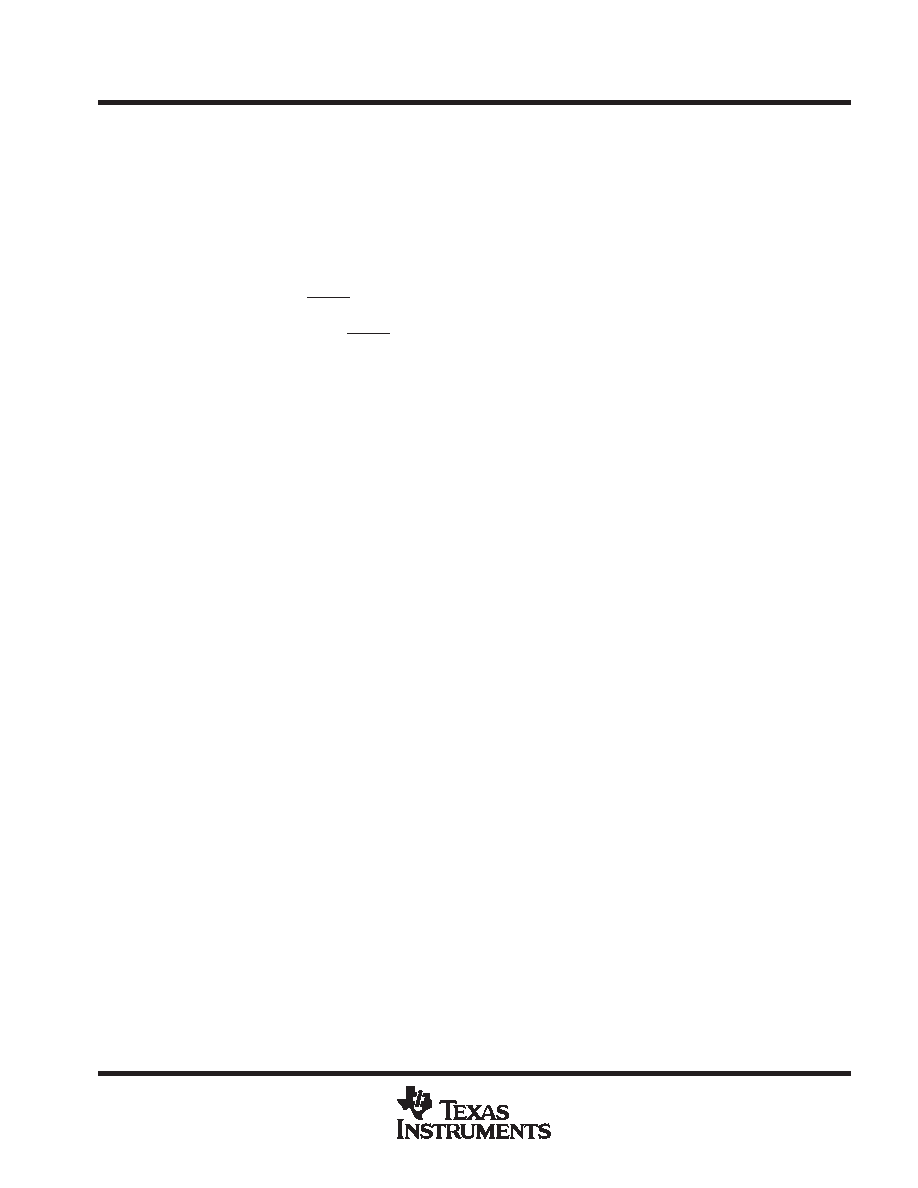- 您現(xiàn)在的位置:買賣IC網(wǎng) > PDF目錄300050 > UCC2813-2QDRQ1 (TEXAS INSTRUMENTS INC) 1 A SWITCHING CONTROLLER, 1000 kHz SWITCHING FREQ-MAX, PDSO8 PDF資料下載
參數(shù)資料
| 型號(hào): | UCC2813-2QDRQ1 |
| 廠商: | TEXAS INSTRUMENTS INC |
| 元件分類: | 穩(wěn)壓器 |
| 英文描述: | 1 A SWITCHING CONTROLLER, 1000 kHz SWITCHING FREQ-MAX, PDSO8 |
| 封裝: | PLASTIC, SOIC-8 |
| 文件頁(yè)數(shù): | 12/14頁(yè) |
| 文件大小: | 428K |
| 代理商: | UCC2813-2QDRQ1 |
第1頁(yè)第2頁(yè)第3頁(yè)第4頁(yè)第5頁(yè)第6頁(yè)第7頁(yè)第8頁(yè)第9頁(yè)第10頁(yè)第11頁(yè)當(dāng)前第12頁(yè)第13頁(yè)第14頁(yè)

UCC28130/1/2/3/4/5Q1
LOW POWER BICMOS CURRENT MODE PWM
SGLS245B MAY 2004 = REVISED APRIL 2006
7
POST OFFICE BOX 655303
DALLAS, TEXAS 75265
detailed descriptions (continued)
RC
RC is the oscillator timing pin. For fixed frequency operation, set timing capacitor charging current by connecting
a resistor from REF to RC. Set frequency by connecting timing capacitor from RC to GND. For best perfomance,
keep the timing capacitor lead to GND as short and direct as possible. If possible, use separate ground traces
for the timing capacitor and all other functions.
The frequency of oscillation can be estimated with the following equations:
UCC28130 1 2 4: F
+ 1.5
R
C
UCC28133 UCC28135 : F
+ 1.0
R
C
where frequency is in Hz, resistance is in ohms, and capacitance is in farads. The recommended range of the
timing resistors is between 10 k
and 200 k and the timing capacitor is 100 pF to 1000 pF. Never use a timing
resistor less than 10 k.
To prevent noise problems, bypass VCC to GND with a ceramic capacitor as close to the VCC pin as possible.
An electrolytic capacitor may also be used in addition to the ceramic capacitor.
voltage reference (REF)
REF is the voltage reference for the error amplifier and also for many other functions on the IC. REF is also used
as the logic power supply for high-speed switching logic on the IC.
When VCC is greater than 1 V and less than the UVLO threshold, REF is pulled to ground through a 5-k resistor.
This means that REF can be used as a logic output indicating power system status. It is important for reference
stability that REF is bypassed to GND with a ceramic capacitor as close to the pin as possible. An electrolytic
capacitor may also be used in addition to the ceramic capacitor. A minimum of 0.1-
F ceramic capacitor is
required. Additional REF bypassing is required for external loads greater than 2.5 mA on the reference.
To prevent noise problems with high-speed switching transients, bypass REF to ground with a ceramic capacitor
close to the IC package.
power (VCC)
VCC is the power input connection for this device. In normal operation, VCC is powered through a current limiting
resistor. Although quiescent VCC current is low, total supply current will be higher, depending on OUT current.
Total VCC current is the sum of quiescent VCC current and the average OUT current. Knowing the operating
frequency and the MOSFET gate charge (Qg), average OUT current can be calculated from:
I
OUT + Qg
F.
(1)
(2)
相關(guān)PDF資料 |
PDF描述 |
|---|---|
| UCC284SDR-12EP | 12 V FIXED NEGATIVE LDO REGULATOR, 0.5 V DROPOUT, PDSO8 |
| UCC284SDR-5EP | 5 V FIXED NEGATIVE LDO REGULATOR, 0.55 V DROPOUT, PDSO8 |
| UCN5804B | STEPPER MOTOR CONTROLLER, 1.5 A, PDIP16 |
| UDQ2916LB-T | STEPPER MOTOR CONTROLLER, 1 A, PDSO24 |
| UE25-CM55-10H | 5 CONTACT(S), FEMALE, RIGHT ANGLE TELECOM AND DATACOM CONNECTOR, SURFACE MOUNT, RECEPTACLE |
相關(guān)代理商/技術(shù)參數(shù) |
參數(shù)描述 |
|---|---|
| UCC2813-3 | 制造商:TI 制造商全稱:Texas Instruments 功能描述:Low Power Economy BiCMOS Current Mode PWM |
| UCC2813-3QDRQ1 | 制造商:TI 制造商全稱:Texas Instruments 功能描述:LOW-POWER BICMOS CURRENT-MODE PWM |
| UCC2813-4 | 制造商:TI 制造商全稱:Texas Instruments 功能描述:LOW-POWER BICMOS CURRENT-MODE PWM |
| UCC2813-4QDRQ1 | 制造商:TI 制造商全稱:Texas Instruments 功能描述:LOW-POWER BICMOS CURRENT-MODE PWM |
| UCC2813-5 | 制造商:TI 制造商全稱:Texas Instruments 功能描述:Low Power Economy BiCMOS Current Mode PWM |
發(fā)布緊急采購(gòu),3分鐘左右您將得到回復(fù)。